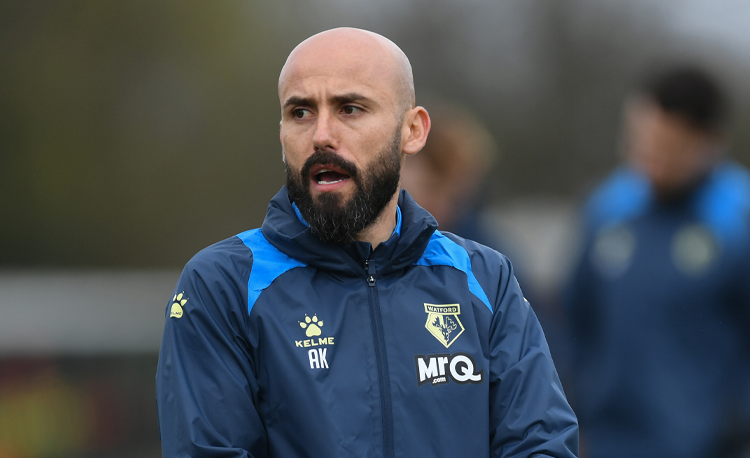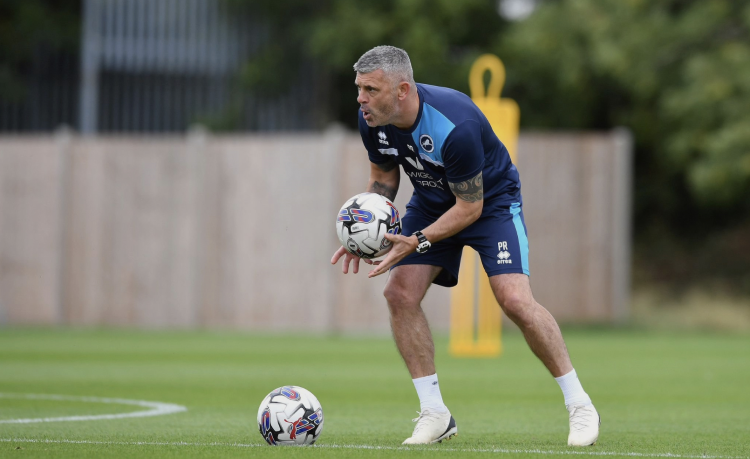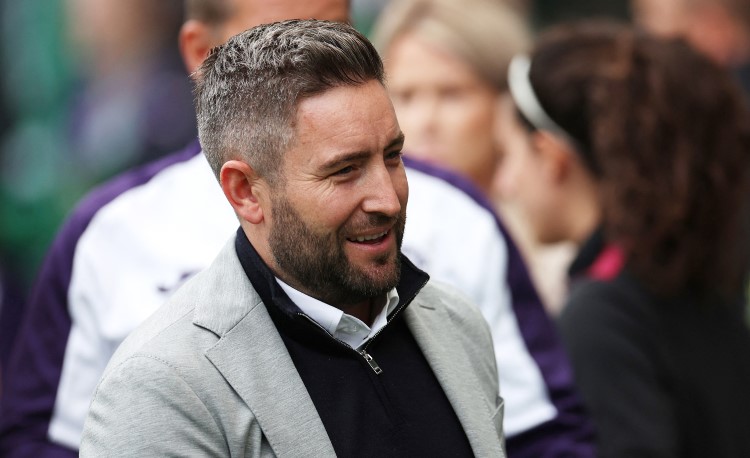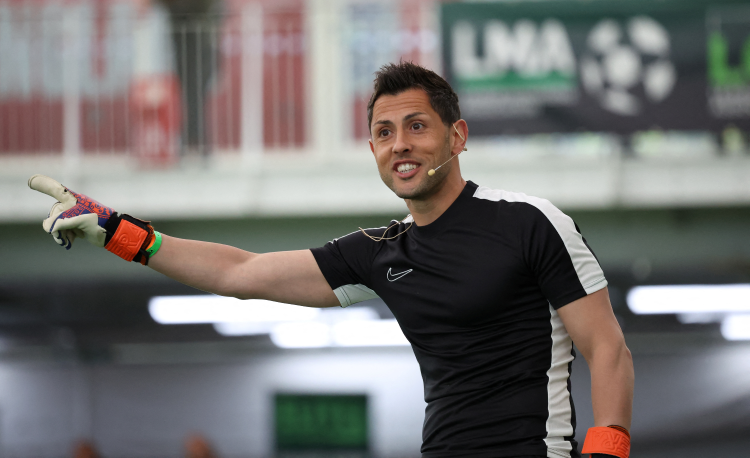High press
I will be looking at the high press working with the front two units of the team in a 1-4-3-3 formation against an opposition back two units in the same formation.
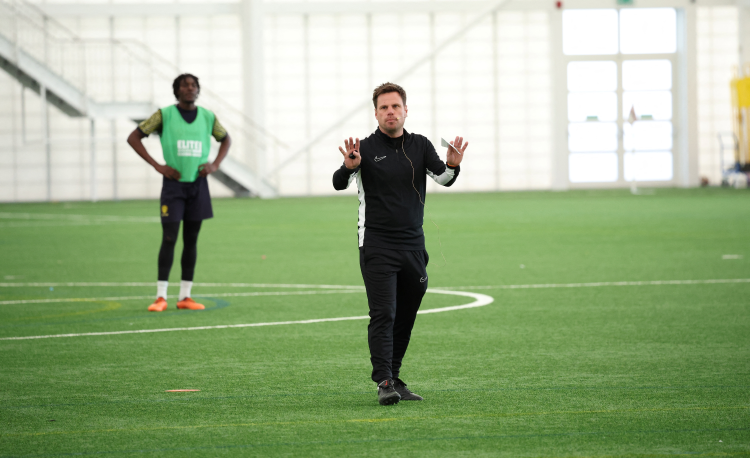
| Area | Two-thirds of pitch |
| Equipment |
Ball |
| No. of Players | 20 plus 2 goalkeepers |
| Session Time | Up to an hour |
I will be looking at the high press working with the front two units of the team in a 1-4-3-3 formation against an opposition back two units in the same formation. I will initially focus on a pressing strategy where the front three work against the opposition defensive six players, looking to force the play inside the pitch and the role of the midfield unit behind this. The session will be a small-sided game scenario, 8v7, including goalkeepers. Time and space permitting, I will also run an attack v defence scenario with recovery runs involved for the attackers.
I like to use this session to get tactical principles across to the players being coached in more of a game format. This helps with player engagement, adding more flow than some more traditional tactical sessions. This sort of game scenario also helps with player decision-making as the practice is live; solutions won’t necessarily be immediately obvious for the players, just like it is in the actual 11v11 game.
I would look to use this session in a club environment on MD-3 or MD-2 as it can be quite intense, depending on how long you want to run it for. I would use it as part of a group of sessions designed to implement a pressing strategy against teams who like to play out from defence through their midfield, allowing them to play initially before pressing to regain the ball in advanced areas.
“Solutions won’t be immediately obvious for the players – just like in a match situation”
SMALL-SIDED GAME
I’ll make the area size big (adjust for daily/weekly periodisation) to make it quite hard physically for the players: about two-thirds of a pitch in length and then narrowed off a little on the sides. There will be a zone in the middle for the two attacking midfielders for the opposition and my three midfielders to start within, as the practice starts with the opposition goalkeeper. This will make it a 6 v 3 initially, in favour of the opposition; both teams will be set up in their units within a 4-3-3 formation. Start points will be from the opposition goalkeeper, opposition throw-ins in their defensive half, and I will introduce balls into the session from my hand to develop transitional moments as and when needed as the practice progresses.
[1]

-
Play starts from the goalkeeper
- The front three work against the opposing defensive six
“Concentration and decision-making will be challenged”
As the practice develops, midfield players will move out of the middle zone to help with the press as and when they are needed, and the opposition will be able to move freely when they have the ball. The back of the zone will also provide an offside line.
When my team regain the ball, they will look to attack the opposition’s goal and it will become an open-game scenario, with all players being able to attack the goal, within their team structure. If the ball is turned over, we will look at counter-pressing and/or recovery runs when needed.
I would progress the session by bringing in my team’s back four players and the opposition’s front three players to take it into an 11 v 11 scenario, building the principles of their work into the session.
[2]
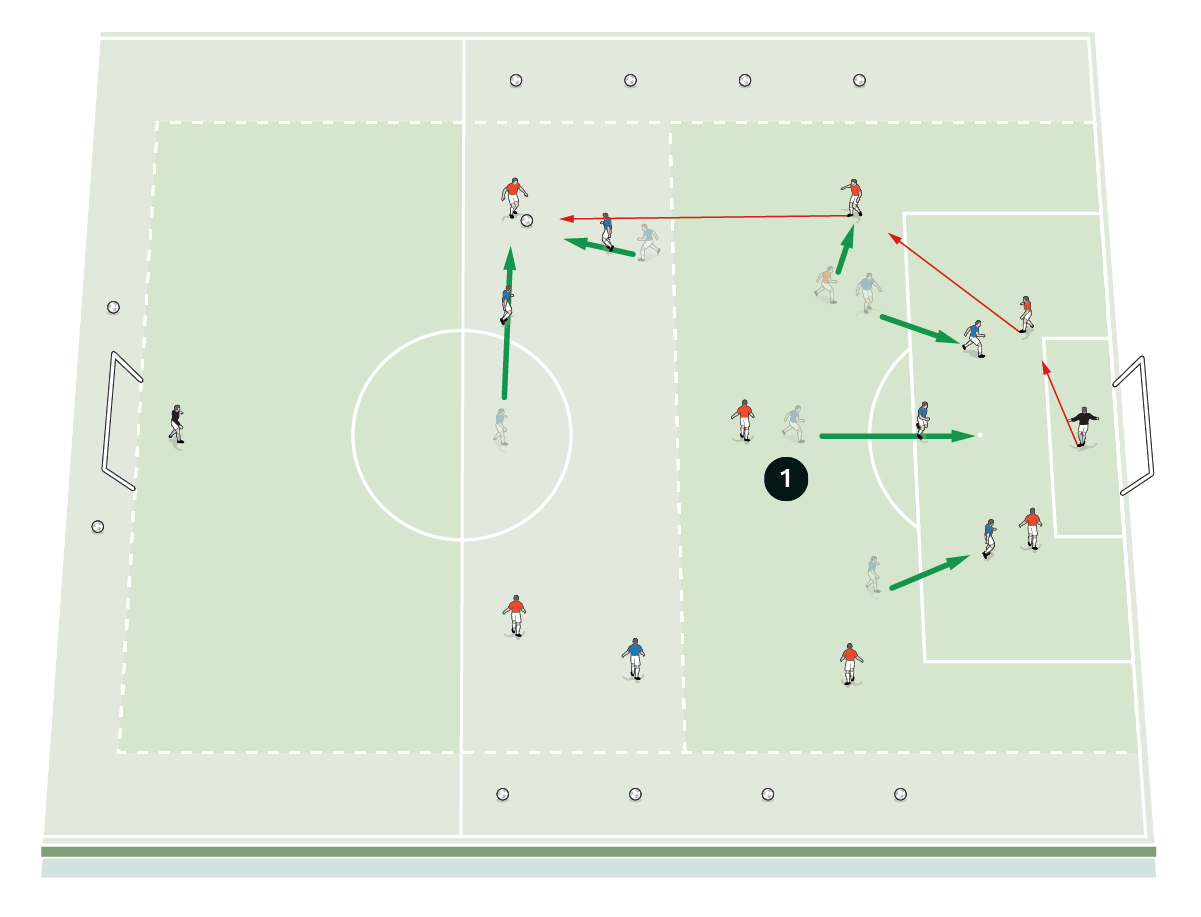
-
As the practice develops, midfielders move out of the middle zone to help with the press
“They will make mistakes – which is what I want”
I would also progress the practice by adjusting the opposition’s way of building play or their formation so that this gives the team I am coaching a different problem to consider in their own play, potentially having to adjust the pressing strategies to deal with these changes.
The session can be altered in time and intensity to suit a particular day that you are going after from a physical point of view. At least two days away from the game, this full session could last around 45-60 minutes, breaking out of the small-sided game to go into the technical detail and then back to the game, or by adding in the additional players to make it into an 11v11.
[3]

-
It will become an open-game scenario, with all players being able to attack the goal, within their team structure
COACHING POINTS
What are the key things to look out for?
Tactically the players will be tested, particularly the front three, as they will be outnumbered quite significantly in the early stages, so good levels of concentration and decision-making will be challenged. The midfield players in support of the front three will have to decide when to engage players in front of them. Communication will be key. Physically the practice will also be testing.
What are the typical mistakes players might make and how do I avoid them?
The players will make mistakes - which is what I want. The progression through the session should help them with their decision-making of when, who and how to press in this way effectively when under-loaded. I expect that the players at times will press too high and too early rather than waiting for the specific triggers to press. Also when the press is beaten, I expect that I will have to work on the recovery of the players back into shape and what these runs look like.
Editor's Picks
Attacking transitions
Deep runs in the final third
Using the goalkeeper in build-up play
Intensive boxes drill with goals
Penetrating the final third
Creating and finishing
My philosophy
Pressing initiation
Compact team movement
Coaches' Testimonials

Alan Pardew

Arsène Wenger

Brendan Rodgers

Carlos Carvalhal

José Mourinho

Jürgen Klopp

Pep Guardiola

Roy Hodgson

Sir Alex Ferguson

Steven Gerrard
Related
Desire to defend at all costs
Crossing, finishing and defending
Flow the risk
Coaches' Testimonials

Gerald Kearney, Downtown Las Vegas Soccer Club

Paul Butler, Florida, USA

Rick Shields, Springboro, USA

Tony Green, Pierrefonds Titans, Quebec, Canada
Join the world's leading coaches and managers and discover for yourself one of the best kept secrets in coaching. No other training tool on the planet is written or read by the calibre of names you’ll find in Elite Soccer.
In a recent survey 92% of subscribers said Elite Soccer makes them more confident, 89% said it makes them a more effective coach and 91% said it makes them more inspired.
Get Monthly Inspiration
All the latest techniques and approaches
Since 2010 Elite Soccer has given subscribers exclusive insight into the training ground practices of the world’s best coaches. Published in partnership with the League Managers Association we have unparalleled access to the leading lights in the English leagues, as well as a host of international managers.
Elite Soccer exclusively features sessions written by the coaches themselves. There are no observed sessions and no sessions “in the style of”, just first-hand advice delivered direct to you from the coach.




